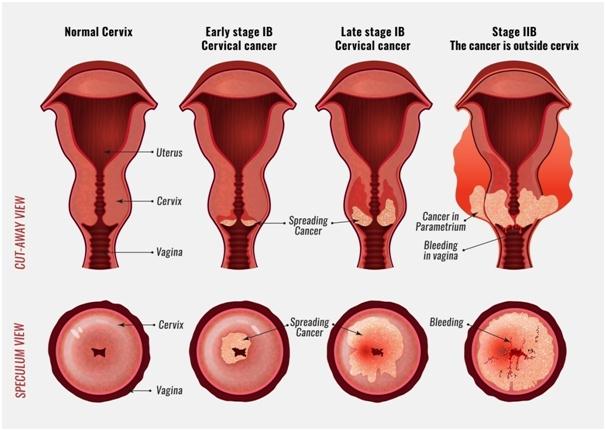

In a first, the World Health Organisation’s (WHO) launched the Global Strategy to Accelerate the Elimination of Cervical Cancer.
Context
In a first, the World Health Organisation’s (WHO) launched the Global Strategy to Accelerate the Elimination of Cervical Cancer.
About
- Cervical cancer develops in a woman's cervix (the entrance to the uterus from the vagina).
- Almost all cervical cancer cases (99%) are linked to infection with high-risk human papillomaviruses (HPV), an extremely common virus transmitted through sexual contact.
- Although most infections with HPV resolve spontaneously and cause no symptoms, persistent infection can cause cervical cancer in women.
- Effective primary (HPV vaccination) and secondary prevention approaches (screening for, and treating precancerous lesions) will prevent most cervical cancer cases.
- When diagnosed, cervical cancer is one of the most successfully treatable forms of cancer, as long as it is detected early and managed effectively.
- Cancers diagnosed in late stages can also be controlled with appropriate treatment and palliative care.
- With a comprehensive approach to prevent, screen and treat, cervical cancer can be eliminated as a public health problem within a generation.
Cervical Cancer Types
There’s more than one kind of cervical cancer.
- Squamous cell carcinoma: This forms in the lining of your cervix. It’s found in up to 90% of cases.
- Adenocarcinoma:This forms in the cells that produce mucus.
- Mixed carcinoma:This has features of the two other types.
|
The numbers
|
Key-highlights of the Programme
- The programme aims to complete the following targets by 2030 globally:
- 90 per cent girls fully vaccinated with the Human papillomavirus (HPV) vaccine by 15 years of age
- 70 per cent women screened using a high-performance test by 35 years and again by 45 years
- 90 per cent of women identified with cervical disease receive treatment (90 per cent of women with pre-cancer treated and 90 per cent of women with invasive cancer managed).
- Another highlight of the strategy is to stress on investing in interventions to meet these targets that can generate substantial economic and societal returns.
- WHO estimates that $ 3.20 will be returned to the economy for every dollar invested through 2050 and beyond if women’s workforce participation increased.


